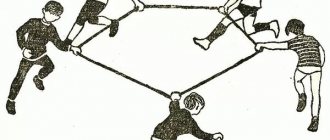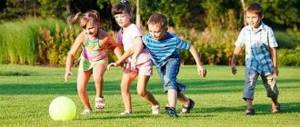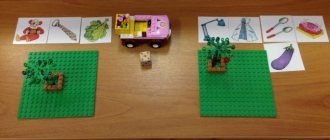Poems
Small counting poems have a clear rhyme, which allows children to quickly remember the plot. Constantly studying new poems helps to train and improve memory, develop imagination by composing your own poems.
Children willingly study quatrains with an interesting plot, for example:
- Owl-owl, Huge head! He sits on a branch and looks in all directions. Suddenly it will fly!
- Cat, do you want milk? We have a long way to go home! A very long path awaits us - here we turn the corner. Next is a bridge across the river! I caught you by the tail!
funny
Counting books for children 4 years old or 12 years old that contain humorous words or stories will help develop artistry. Having learned a funny rhyme, children will be able to recite it in a group, make their friends laugh and amuse them. Additionally, this helps the child become more self-confident.
A well-known funny rhyme is the following:
I'm a little girl and I don't go to school. Buy me some shoes - I'm getting married!
Funny poems also contain useful information.
For example, this counting:
Once upon a time there lived 3 herrings: Mulya Bullet and Balda. Bullet and Mulya slept together, and Balda slept alone.
It introduces children to counting and various forms of interaction (in this verse, using fish as an example). Funny rhymes are often used during a variety of entertainment.
For example, when playing silent games, children recite one of the following funny poems:
- The boyars were driving and lost the cat. And the cat died, its tail fell off, whoever says a word will eat this cat.
- A sparrow ran along the roof - he was carrying a jar of snot. The first one to speak will drink it!
- 3 ducks were flying in the sky, keep quiet for 3 minutes!
- You are a fisherman and I am a fisherman! Catch, fish and catch, cancer! Silence, quickly silence! Whoever says a word is a worm!
- 1,2,3 – don’t say anything! We close our mouths, whoever says a word, click!
For schoolchildren
Counting books for children 7-12 years old help children adapt better to the school community. And counting in verse teaches schoolchildren justice and honesty, because the choice and course of the game are not influenced by extraneous factors. Also, counting rhymes for schoolchildren can contain useful information on a specific subject. This way, children will be able to remember school material faster.
Counting books for students of different ages are presented in the table below.
| Age of schoolchildren | Counting books |
| 7-8 years |
|
| 9-10 years |
|
| 11-12 years old |
|
Counting books are often used when children learn a foreign language. Teachers in the classroom, as well as teachers in English or other foreign language courses, use them as an effective teaching method. Counting books make the complex, lengthy learning process more interesting, because memorizing new words in a playful way happens much faster.
Saying counting rhymes allows children to develop correct diction, increase their vocabulary of foreign words, and develop fine motor skills (counting rhymes are often accompanied by the performance of certain gestures and actions).
A popular English rhyme is the following:
Rain, rain go away, Come again another day;
Little Jonny wants to play.
Rain, rain, go to Spain,
Do not show your face again.
This counting rhyme is translated as follows:
Rain, rain, go away and come back on other days! Johnny wants to go for a walk! Rain, rain, go to Spain and don’t come back!
This rhyme (Russian version), in a slightly modified form, can be heard in a series of educational cartoons.
When learning German, rhymes with names are often used, for example:
Wer ist das? Wer ist das?
Das ist Lene. Das ist Hans.
Wer ist das? Wer ist das?
Das ist Anna. Das ist Franz.
Literally, the counting rhyme is translated as follows:
Who is this? Who is this?
This is Lena, This is Hans!
Who is this? Who is this?
This is Anna! This is France!
In order for both schoolchildren and preschool children to better remember rhyming rhymes (not only foreign, but also Russian), it is recommended to use them in different situations:
- At home when the child communicates with his parents . For example, a counting rhyme will help you choose what clothes to wear, what candy to eat, or how to distribute chores around the house.
- During the game. For example, which doll should be combed and dressed first, which toy should be poured tea first. After playing together with adults, the child will subsequently use counting rhymes and play independently without the involvement of parents. Counting tables can also be used when collecting toys - which one should be sent to its place first.
- When communicating with friends . Conflicts often arise between children for various reasons. Using a counting rhyme, you can avoid their occurrence, because everything will be decided by chance, and not someone’s opinion. This must be explained to the child and, if possible, a solution to the problem that has arisen between friends must be proposed using a counting rhyme. First, adults will help put the counting rhyme into practice, and then children will use this method independently.
Developmental
Educational rhymes at any age help children not only become familiar with counting, but also perform simple actions and tasks.
For example:
Here are the mushrooms on the meadow wearing red caps. 2 mushrooms, 3 mushrooms, will it be together? - 5.
This math rhyme will help children learn how to add numbers. Also important is the ability to count not only sequentially, but also in reverse order.
The following rhyme can help with this:
1, 2, 3, 4, 5 - the sun cannot be reached from the sky. 5, 4, 3, 2, times - the sun gently warms us.
Whoever is smart, get out!
Counting books for children 3-4 years old
***
I am an animal and you are an animal. I am a mouse, you are a ferret. You are cunning, and I am smart. Whoever is smart, get out!
***
A bunny was running along the road, but his legs were very tired. The bunny wanted to sleep, come out and look for him.
***
The mouse dried the dryers, the mouse invited the mice. The mice drank, the mice ate, they only crunched on the dry bread.
***
A ram walked along the steep mountains, pulled out the grass, and laid it on a bench. Whoever takes it will go there.
***
Hush, mice! Cat on the roof. And kittens are even higher! The cat went for milk, And the kittens went head over heels, The cat came without milk, And the kittens: - Ha-ha-ha!
***
Almond teremok, Crystal teremok, Simple teremok, Come out, my friend!
***
Once! - The mouse is on the path! Two! - A cat is sneaking towards him! Three! - The mouse snuck into the hole! And he laughs, the mischievous one!
***
This finger is grandpa, This finger is grandma, This finger is daddy, This finger is mommy, But this finger is me, That’s my whole family!
***
The zealous long-maned horse gallops across the field, gallops through the fields. Whoever catches the horse plays tag with us.
***
One two three four five. We'll play hide and seek. The sky, the stars, the meadow, the flowers - just go and lead me!
***
The bunny came out onto the path and got his poor little feet wet. To prevent his feet from getting cold, he will walk in felt boots, he will walk in felt boots. It's time for you to drive.
***
Ding-dong, ding-dong, the bells are ringing. Ding-dong, ding-dong, the children are delighted with the ringing. Ding-dong, ding-dong, get out of the circle.
A special category consists of finger counting rhymes. Such texts are pronounced with the participation of the baby’s fingers: they can be bent and unbent, lightly shaken or kissed
Come out to the green meadow, my friend!
Counting books for children 4-5 years old
***
Tra-ta-ta! Tra-ta-ta! A cat married a cat, A cat married a cat, A cat married Pyotr Petrovich! He is mustachioed and striped, Well, not a cat, but just a treasure!
***
One two three four five! Nature must be protected. Take care of the dense forest - Don’t drink or chop. Lead the forester again, We can run away!
***
One two three four five six! There are a lot of trees in the forest. Here is a birch, here is an aspen, and here is a red rowan. You, rowan, mature, catch up with us guys.
***
Tili-tili-tili-tili. You and I went for a walk. You and I went for walks, We did round dances, We splashed in the river, splashed and rolled around in the thick grass. Only now night has crept in. Run away quickly!
***
A hare runs across the bridge, long ears, short tail. Don't run too far, help us do the math. One, two, three - Get out!
***
One two three four five. The fingers went out for a walk. This finger found a mushroom, This finger is a clean table. This one cut, this one ate, and this one just watched.
***
Beyond the seas, beyond the mountains, Behind the dense forests On a hillock there is a tower, On the doors there is a lock. Whoever finds the key to the lock will go out of the circle.
***
Boys are like bunnies, Girls are like squirrels, They jump and jump, If they fall, they don’t cry. Don't sit outside the window, come out to us quickly! Come out to the green meadow, my friend!
***
The little cockerel ate a pie with raisins! He pecked it little by little, and counted by the raisin: One, two, three, you go!
***
Once upon a time there lived a hundred guys. Everyone went to kindergarten, Everyone sat down for lunch, Everyone ate a hundred cutlets, And then they went to bed - Start counting again.
***
Among the white doves A nimble sparrow is galloping, A sparrow is a bird, A gray shirt, Respond, sparrow, Fly out, don’t be timid!
Counting books help children acquire knowledge about the world around them. A child will easily understand a story about animals if it is framed in a “counting” rhyme
common goal
Counting books are small verses with a clear rhyme. Most often, they are used by children to assign roles in various games (hide and seek, catch-up, etc.). Some parents consider them to be useless, often meaningless verses that do not bring any benefit to the child. But in addition to the distribution of roles, the counting rhyme plays a great role in the development of the child and the formation of his personality.
With their help, children:
- Develop and improve memory by remembering sequences of words.
- They learn to count, since many counting rhymes have a numerical sequence.
- Train attention and concentration.
- Develop and improve logical thinking.
- Remember the letters of the alphabet (some verses have a list of letters).
- Develop and develop a sense of rhythm.
- They develop creative abilities (children try to compose poems and rhymes on their own).
- Get rid of shyness. A child who knows interesting rhymes arouses interest among his peers, becoming popular. In this way, children gradually gain self-confidence.
- Increase vocabulary by learning new words.
- Learn to interact with people around you.
- They learn to observe and follow the rules, to compromise.
- They develop a sense of friendship, help, and learn to be honest and fair.
Many rhymes involve direct interaction between participants (for example, hand touching). This contributes to the development of friendly and trusting relationships between children. Also, some rhymes are accompanied by certain movements and actions (for example, you need to jump, clap your hands, dance). Thanks to this, children improve coordination of movements and speed of physical reactions.
At the moment, it is unknown where the rhymes came from and how they appeared. There are several versions. One of them says that with the help of counting rhymes, people in ancient times fairly distributed work and responsibilities among themselves.
Another story is related to religion - in ancient times, people were afraid to anger the gods. They decided to count their prey in an unusual form, using allegorical expressions, hiding their success in hunting so that the gods would not envy them. In ancient times, counting rhymes were also considered one of the methods of fortune-telling - whether or not it is worth starting a certain task or business. Counters have various qualifications.
The two most popular are:
- By content (or verbal attribute) . There are substitute counting rhymes (there is no numerical or counting sequence in the verse), abstruse counting rhymes (containing incomprehensible or abstruse words of foreign origin) and counting rhymes containing numbers, numbers and a counting sequence.
- By origin - original rhymes composed by a children's poet, writer, and folk rhymes. Such works do not have a specific author. Usually they are passed down from generation to generation, supplemented with new stories, and modified.
Count in order, but if you can’t, fly out!
Counting books for children 5-6 years old
***
The toad jumped and jumped and almost fell into the swamp. The grandfather came out of the swamp, two hundred and eighty years old. He carried herbs and flowers. Get out of the circle.
***
A wolf and seven kids were sitting in a row on a bench. Tsar Saltan and Prince Guidon, Aibolit, fox and elephant, Uncle Styopa, Nesmeyana. Name everyone without deception. Count them in order, but if you can’t, fly out.
***
One day a mouse came out to see what time it was. One, two, three, four, the Mouse pulled the weights. Suddenly there was a strong ringing sound. Get out of the circle.
***
Behind the high mountains stands a bear with pies. Hello, Mishenka-friend, How much does the pie cost? The pies are not for sale, they are put into the mouth themselves, but whoever takes them will go and drive them.
***
Our Masha got up early, counted all the dolls: Two Matryoshkas on the window, Two Arinkas on the feather bed, Two Tanyas on the pillow, and Parsley in a cap on an oak chest!
***
One, two, three, four, five, We learned to count. Well, we don’t know what’s next. Maybe we can count it together? Six - we love to eat candy, Seven - we help everyone, Eight - we won’t leave our friends in trouble. Nine - let's learn five, Ten - we've finished counting.
***
One, two, three, four, five, Six, seven, eight, nine, ten - You can count everything, Count, measure, weigh... How many corners are there in the room, How many legs do the sparrows have, How many toes are there, How many benches are there in the garden, How many kopecks are there in a penny!
***
Tra-ta-ta! Tra-ta-ta! This is the beauty: There is a pine tree on the mountain, A goggle-eyed owl sits sleepless on the pine tree, This is the head. He doesn't sleep all night, he keeps order. Don't follow, one, two, three, come out.





